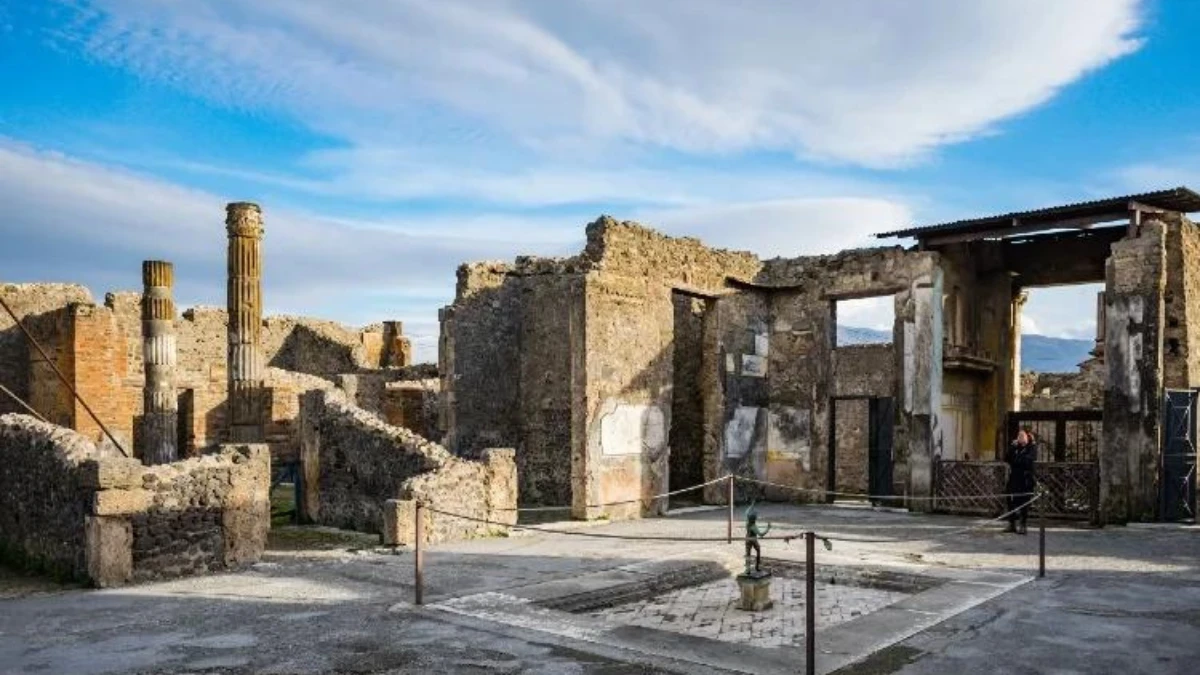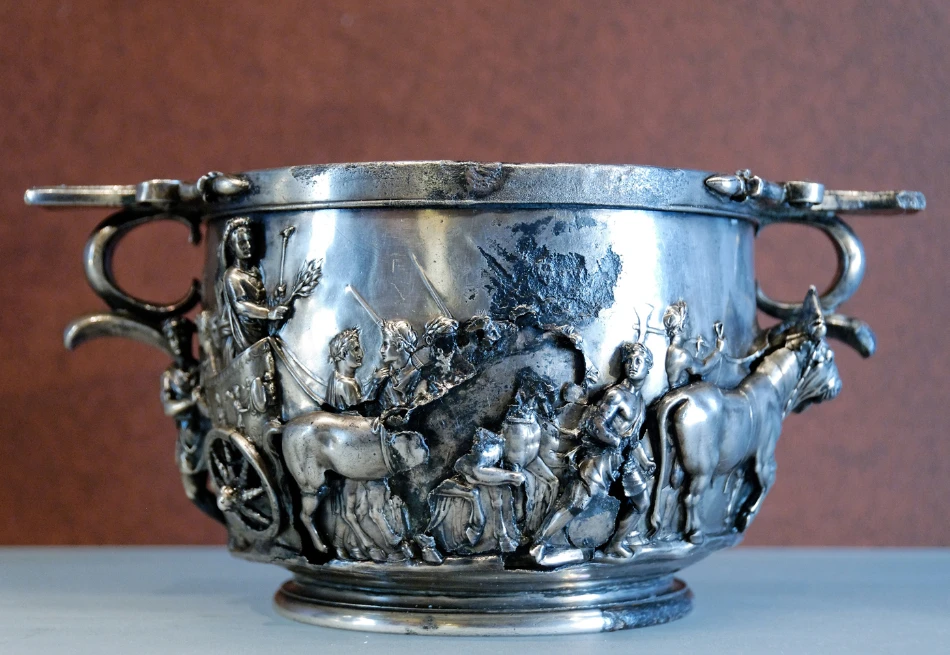Boscoreale
The Lost Roman Heritage
Rome
Naples
Amalfi
Sorrento
Positano

Most tourists swarm to Pompeii or hike up to Mt. Vesuvius, but lesser-known sites like Boscoreale often escape attention.
Just 3 km (2 miles) north of Pompeii lies a once-thriving agricultural site with sophisticated villas preserved under layers of ash and pumice.
Boscoreale offers a rare glimpse into ancient life, with remarkably intact buildings, artifacts, and even food.
Prepare to be amazed by the treasures in the Antiquarium di Boscoreale, where rare artifacts showcase the daily lives of ancient Romans in stunning detail.
Not sure which Pompeii entry tickets are right for you? Let us guide you through the best options, from skip-the-line tickets and guided tours to convenient day tours to Pompeii, to make the most of your visit!
Highlights of Boscoreale
From the Villa of P. Fannius Synistor to the treasures of Boscoreale, let’s find out everything that awaits inside this Italian comune.
Villa of P. Fannius Synistor
One of Boscoreale’s well-known houses, the Villa of P. Fannius Synistor, is renowned for its magnificent murals and exquisitely preserved architecture.
It features elaborate wall paintings that create an illusion of open spaces, columns, and lush landscapes—a striking example of Roman Second Style painting.
The artifacts and decor from the villa offer a glimpse into affluent Romans’ opulent way of life.
The MET Collection
The Metropolitan Museum of Art houses several remarkable artifacts from the Villa of P. Fannius Synistor, including wall paintings from Room M and L and even a reconstructed cubiculum (bedroom).
Antiquarium of Boscoreale
The Antiquarium of Boscoreale is a captivating museum that displays a variety of antiquities from Boscoreale, including common home objects, farming implements, and exquisitely preserved mosaics and frescoes.
It is dedicated to the daily life and culture of ancient Romans around Mount Vesuvius—revealing how Romans lived, worked, and thrived before the eruption.
The museum’s unique displays are a great resource for learning about the Roman era and the local economy.
The Villa of Pisanella
Unearthed between 1895 and 1899, this villa offers a fascinating glimpse into Roman life, with staff quarters, a bakery, a stable, and even an oil mill and a wine press.
Scholars believe that it may have belonged to the renowned Pompeiian banker Lucius Caecilius Lucundus, who managed an impressive 24 hectares of land.
Remarkable treasures were discovered here, including 1,037 gold coins and a 108-piece silver service from the Augustan era, now showcased in the Rothschild Collection and the Louvre Museum.
The villa also included a variety of fine jewelry and elegant home furnishings, revealing the wealth and sophistication of its owner.
Recommended
Rustic villa in Villa Regina
This rustic villa in the Villa Regina has rooms that are thoughtfully arranged around an open courtyard, with a wine cellar that still holds eighteen large jars. They offer a charming look into ancient Roman agriculture and winemaking.
The major highlights of the villa include a pressing room with a wooden press, a storeroom that contains most of the villa’s furniture, and a portico.
The villa’s triclinium includes a kitchen complete with a brick oven and vibrant wall murals.
Originally built in the first century BC, it was later expanded and restored to show replanted vines that follow ancient vineyard patterns, reminiscing traditional Roman farming.
The layers of ash from the devastating 79 AD eruption remain visible on the excavation walls, preserving this site’s rich agricultural history.
Plan your visit to Pompeii:
# Discover Pompeii’s opening hours and timings
# Find the best entrance for your Pompeii adventure
# Explore the must-see highlights of Pompeii
# Get essential tips for an unforgettable visit to Pompeii
Wondering how to reach Pompeii from different locations? Whether you’re coming from Rome, Naples, Amalfi, Sorrento, or Positano, we’ve gathered the best travel options to make your journey easy and hassle-free.
Treasures of Boscoreale

The Treasures of Boscoreale include an extraordinary collection of Roman silverware, jewelry, and coins, showcasing the wealth and artistry of the time.
These treasures, along with household items and beautifully crafted furnishings, offer a rare glimpse into the luxurious lives of Boscoreale’s ancient residents.
Explore Pompeii with convenient day tours departing from Naples, Rome, Sorrento, Amalfi, and Positano.
Learn about the facilities available onsite, familiarize yourself with the rules and regulations for visitors, and enjoy convenient dining and refreshment spots within Pompeii. For a complete experience, you’ll also find nearby hotels for a comfortable stay after a day of exploration.
FAQs on Boscoreale
Here are some of the most commonly asked questions about the Italian comune of Boscoreale.
How does Boscoreale differ from Pompeii?
Boscoreale is an ancient Roman city like Pompeii, which was destroyed and preserved by the volcanic eruption in AD 79. However, Boscoreale primarily features Roman villas and sites focused on agricultural life, offering insight into the farming practices and rural lifestyle of the time, along with luxurious villas.
How do I book my ticket to Boscoreale?
Boscoreale has a ticket counter of its own, but for an exclusive experience at Boscorele, we suggest booking a private tour.
How to go to Boscoreale from Pompeii?
Boscoreale is just 3 km (2 mile) from Pompeii, and if you go by car, you will reach your destination in 6 minutes. You can also take the bus, which you can board at Piazza Esedra (one of the Pompeii entrances).
Are Boscoreale and Antiquaruim of Boscoreale the same?
There is a slight variation between these two. Boscoreale is one of the ancient Roman towns with luxurious villas and agricultural sites, especially vineyard fields. The Antiquarium of Boscoreale is a museum inside this archeological site, where you can see everything they used 2000 years ago.
Does Boscoreale have restaurants?
Yes, there are restaurants and cafes close to this attraction.
Is Boscoreale suitable for children?
Yes, it is suitable for children, as they can learn a lot about Roman history. Boscoreale wall paintings give them a totally different perspective of life.
How long does it take to explore Boscoreale?
Depending on your interest in archeology, it usually takes one to three hours.
